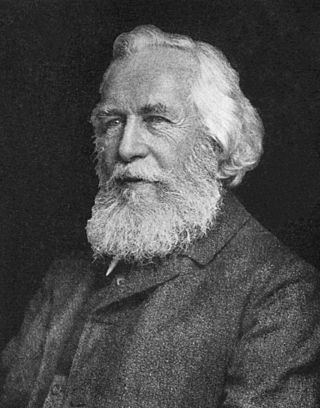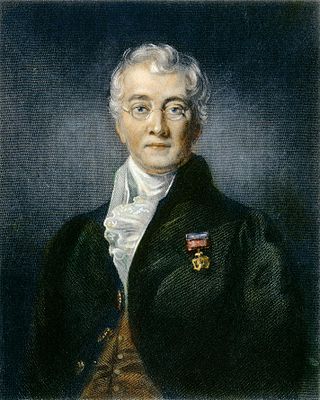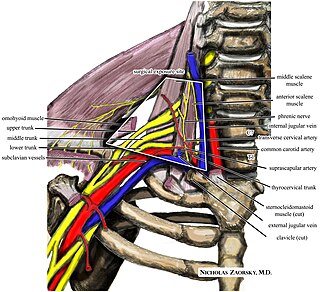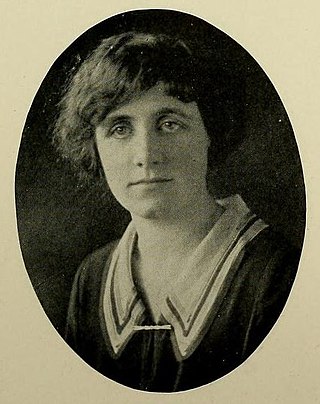
Drawing is a visual art that uses an instrument to mark paper or another two-dimensional surface. The instrument might be pencils, crayons, pens with inks, brushes with paints, or combinations of these, and in more modern times, computer styluses with graphics tablets.

Ernst Heinrich Philipp August Haeckel was a German zoologist, naturalist, eugenicist, philosopher, physician, professor, marine biologist and artist. He discovered, described and named thousands of new species, mapped a genealogical tree relating all life forms and coined many terms in biology, including ecology, phylum, phylogeny, and Protista. Haeckel promoted and popularised Charles Darwin's work in Germany and developed the influential but no longer widely held recapitulation theory claiming that an individual organism's biological development, or ontogeny, parallels and summarises its species' evolutionary development, or phylogeny.

Embryo drawing is the illustration of embryos in their developmental sequence. In plants and animals, an embryo develops from a zygote, the single cell that results when an egg and sperm fuse during fertilization. In animals, the zygote divides repeatedly to form a ball of cells, which then forms a set of tissue layers that migrate and fold to form an early embryo. Images of embryos provide a means of comparing embryos of different ages, and species. To this day, embryo drawings are made in undergraduate developmental biology lessons.

An illustration is a decoration, interpretation, or visual explanation of a text, concept, or process, designed for integration in print and digitally published media, such as posters, flyers, magazines, books, teaching materials, animations, video games and films. An illustration is typically created by an illustrator. Digital illustrations are often used to make websites and apps more user-friendly, such as the use of emojis to accompany digital type. Illustration also means providing an example; either in writing or in picture form.

An illustrator is an artist who specializes in enhancing writing or elucidating concepts by providing a visual representation that corresponds to the content of the associated text or idea. The illustration may be intended to clarify complicated concepts or objects that are difficult to describe textually, which is the reason illustrations are often found in children's books.

Sir Charles Bell was a Scottish surgeon, anatomist, physiologist, neurologist, artist, and philosophical theologian. He is noted for discovering the difference between sensory nerves and motor nerves in the spinal cord. He is also noted for describing Bell's palsy.

Scratchboard or scraperboard is a form of direct engraving where the artist scratches off dark ink to reveal a white or colored layer beneath. The technique uses sharp knives and tools for engraving into the scratchboard, which is usually cardboard covered in a thin layer of white China clay coated with black India ink. Scratchboard can yield highly detailed, precise and evenly textured artwork. Works can be left black and white, or colored.
Joseph Clement Coll was an American book and newspaper illustrator. He was known for his pen and ink story illustrations that were used to illustrate adventure stories such as Conan Doyle's Sir Nigel.

A medical illustration is a form of biological illustration that helps to record and disseminate medical, anatomical, and related knowledge.

Technical illustration is illustration meant to visually communicate information of a technical nature. Technical illustrations can be components of technical drawings or diagrams. Technical illustrations in general aim "to generate expressive images that effectively convey certain information via the visual channel to the human observer".

Frank Henry Netter was an American surgeon and medical illustrator. The first edition of his Atlas of Human Anatomy — his "personal Sistine Chapel" — was published in 1989; he was a fellow of the New York Academy of Medicine where he was first published in 1957.

Max Brödel was a medical illustrator. Born in Leipzig, Germany, he began his artistic career after graduating from the Leipzig Academy of Fine Arts, working for Carl Ludwig. Under Ludwig's instruction, Brödel gained a basic knowledge of medicine and became recognized for his detailed medical illustrations. In the late 1890s, he was brought to the Johns Hopkins School of Medicine in Baltimore to illustrate for Harvey Cushing, William Halsted, Howard Kelly, and other notable clinicians. In addition to being a prolific medical illustrator, he developed new artistic techniques such as the carbon dust technique that helped the advancement of the quality and accuracy of medical illustrations for physicians. In 1911, he presided over the creation of the first Department of Art as Applied to Medicine; located at the Johns Hopkins School of Medicine, it continues to train medical illustrators to this day. His graduates spread out across the world, and have founded a number of other academic programs.

Botanical illustration is the art of depicting the form, color, and details of plant species. They are generally meant to be scientifically descriptive about subjects depicted and are often found printed alongside a botanical description in books, magazines, and other media. Some are sold as artworks. Often composed by a botanical illustrator in consultation with a scientific author, their creation requires an understanding of plant morphology and access to specimens and references.

Paleoart is any original artistic work that attempts to depict prehistoric life according to scientific evidence. Works of paleoart may be representations of fossil remains or imagined depictions of the living creatures and their ecosystems. While paleoart is typically defined as being scientifically informed, it is often the basis of depictions of prehistoric animals in popular culture, which in turn influences public perception of and fuels interest in these animals. The word paleoart is also used in an informal sense, as a name for prehistoric art, most often cave paintings.
The following outline is provided as an overview of and typical guide to drawing and drawings:
Alice R. Tangerini is an American botanical illustrator. In 1972, Tangerini was hired as a staff illustrator for the Department of Botany at the National Museum of Natural History by American botanist Lyman Bradford Smith. Prior to working at the Smithsonian Institution, she received a Bachelor of Fine Arts from Virginia Commonwealth University. As of March 9, 2017, Tangerini remains the only botanical illustrator ever hired by the Smithsonian.

Desmond W. Helmore is a New Zealand artist and illustrator, known both for his fine art and for his scientific work depicting insects, not least illustrating the New Zealand Arthropod Collection. One of the country's most noted and prolific biological illustrators, over 1000 of his illustrations of insects were published in research papers from 1976 to 2006.

Betsy BangnéeGarrett (1912–2003) was an American biologist, scientific and medical illustrator. She also translated folk tales from Bengali to English. Her scientific work was notable for her finding that many bird species have a sense of smell, a question that had long remained unsettled. Her works included Functional Anatomy of the Olfactory System in 23 Orders of Birds, published in 1971.

Mildred B. Codding was an American medical illustrator. Her illustrations are featured in numerous textbooks and academic journal articles.
Dorothy Davison was a British writer and medical illustrator, whose work was well known for its artistic merit. She founded the Medical Artists' Association in 1949, and trained many young medical artists in Manchester.



















